It has begun.
All three of the “big three” registrations in North Carolina (Democrats, Republicans, and unaffiliated) had a larger-than-usual net rise in voter registrations during the last full week of July (July 21-28):
- Democrats: +443
- Republicans: +2,063
- Unaffiliated: +3,499
While the rise in Democratic registrations may seem small, it is worth noting that they have a net loss in registrations most weeks.
This registration rise is something we see every four years.
The Presidential Election Year Voter Registration Bump
Every four years, starting in the summer before a presidential election, voter registrations start to rise more than usual. By October, the trickle becomes a torrent, with tens of thousands of registrations added each week.
This chart, from the John Locke Foundation’s Voter Registration Changes pages, shows that the bump in registrations during presidential election years, combined with list maintenance (also known as voter roll cleaning or “purges”) a few months later, produces districting “lumps” in North Carolina’s voter registration totals.
North Carolina Voter Registration Changes, 2008-2024

Chart Source: Voter Registration Changes (yellow ovals added)
The 2020 bump was larger than usual. From July 25 through November 3 (election day), 2020, North Carolina had a net gain of 330,861 registrations.
Here are the net changes for the three largest registrations ahead of the 2020 election:
- Democrats: +87,778
- Republicans: +127,243
- Unaffiliated: +102,343
An Even More Rapid Fall in Registrations Is Coming
County boards of elections conduct biennial list maintenance several months after the November elections, with most doing it during January of odd-numbered years:
A problem with regular list maintenance is that it only catches a portion of registrations associated with people who are no longer legally allowed to vote in the county.
So county elections boards also use a “no contact” process near the beginning of every odd (non–federal election) year.
Suppose a voter has not had any contact with the elections system (such as voting or registering to vote) over the past two federal election cycles (four years). In that case, the county board sends the voter a “forwardable address confirmation mailing.” If the person does not respond or the mailing is returned “undeliverable,” the board places that registration on an inactive list.
Once a registration is placed on the inactive list, officials must wait for another two federal election cycles before removing those registrations. If the person associated with that registration has any contact with election officials (such as voting or submitting a change of address within the county) during those four years, the county board of elections puts that registration back on the active voter list.
To give an idea of what the backside of the registration lump will look like, here are the net changes for the three largest registrations from December 19, 2020, to January 30, 2021:
- Democrats: -150,320
- Republicans: -92,627
- Unaffiliated: -123,004
Republicans Are on Pace to Overtake Democrats in 2025 or 2026
So, here are the total net changes for the “big three” registrations from July 25, 2020 to January 30, 2021:
- Democrats: -54,017
- Republicans: +56,186
- Unaffiliated: -4,756
Democrats currently outnumber Republicans by 134,322 registrations. If 2024 is similar to 2020, that advantage will decline by over 100,000. That will put Republicans in a position to overtake Democrats in total registrations sometime in 2025 or 2026.
A note of caution on that last point: no two election years are exactly the same. As we have seen, events can cause sudden changes in registrations. 2008 (for example) was an especially good year for Democratic registrations, and it is possible that they could have another good year this time around. Also, at risk of sounding pedantic, trends remain trends until they don’t. It is possible that the long-term trend in favor of Republicans (and even more so for unaffiliated registrations) will end in 2024.
Of course, it could also go the other way, with Republicans gaining so rapidly that they overtake Democrats in January of 2025.
However, the available evidence indicates that Republicans will do better than Democrats during both the 2024 registration rise and the 2025 registration fall, leading to them overtaking Democrats sometime in 2025 or 2026.
